Pubblicazioni
I miei libri sono qui.
Cross-asset contagion in the financial crisis: A Bayesian time-varying parameter approach (31/12/2019)
MASSIMO GUIDOLIN, Erwin Hansen, and Manuela Pedio
Journal of Financial Markets, 45, 83-114, 2019

The recent U.S. subprime crisis provides us with a perfect framework to study cross-asset contagion mechanisms in the U.S. financial markets. Specifically, we look at how and to what extent a negative shock that initially occurred in the asset-backed security (ABS) low-quality market propagated to ABS higher grade, Treasury repos, Treasury note, corporate bond, and stock markets. We rely on dynamic time series models estimated with Bayesian methods to capture the (potentially) time-varying relation among the different financial markets. We provide evidence of structural changes in the cross-asset relationships and therefore of contagion. Moreover, by observing the impulse response functions of the models, we conclude that contagion mainly occurred through the flight-to-liquidity, risk premium, and the correlated information channels.
Forecasting and Trading Monetary Policy Effects on the Riskless Yield Curve with Regime Switching Nelson-Siegel Models (30/12/2019)
GUIDOLIN MASSIMO and Manuela Pedio
Journal of Economic Dynamics and Control, 107, 2019

We use 1982–2014 data on the US riskless yield curve to show that regime switching dynamics in Nelson-Siegel factor models extended to encompass variables that summarize the state of monetary policy lead to superior predictive accuracy. Such spread in forecasting power turns out to be statistically significant even controlling for parameter uncertainty and sample variation. Exploiting regimes, we obtain evidence that the increase in predictive accuracy is stronger during the Great Financial Crisis, when monetary policy underwent a significant, sudden shift. Although more caution applies in comparisons to a naïve random walk benchmark over a few sub-samples and when transaction costs are accounted for, we report that the increase in predictive power owed to the combination of regimes and of variables that capture the stance of unconventional monetary policies is tradeable. We devise and test butterfly strategies that exploit the forecasts from the models and obtain evidence of risk-adjusted profits both per se and in comparisons to simpler models.
Modeling systemic risk with Markov Switching Graphical SUR models (10/06/2019)
MASSIMO GUIDOLIN, Daniele Bianchi, Monica Billio, and Roberto Casarin
Journal of Econometrics, 2019, Vol. 210, pages 58-74

We propose a Markov Switching Graphical Seemingly Unrelated Regression (MS-GSUR) model to investigate time-varying systemic risk based on a range of multi-factor asset pricing models. Methodologically, we develop a Markov Chain Monte Carlo (MCMC) scheme in which latent states are identified on the basis of a novel weighted eigenvector centrality measure. An empirical application to the constituents of the S&P100 index shows that cross-firm connectivity significantly increased over the period 1999–2003 and during the financial crisis in 2008–2009. Finally, we provide evidence that firm-level centrality does not correlate with market values and it is instead positively linked to realized financial losses.
Regime Shifts in Excess Stock Return Predictability: An Out-of-Sample Portfolio Analysis (24/01/2018)
MASSIMO GUIDOLIN, G. Dalpra, M. Pedio, and F. Vasile
Journal of Portfolio Management, 2018, vol. 44, issue 3, pages 10-24.

The authors analyze the out-of-sample performance of asset allocation decisions based on financial ratio predictability of aggregate stock market returns under linear and regime-switching models. The authors adopt both a statistical perspective to analyze whether models based on valuation ratios can forecast excess equity returns, and an economic approach that turns predictions into portfolio strategies. These consist of a portfolio switching approach, a mean-variance framework, and a long-run dynamic model. The authors find a disconnect between the statistical perspective, whereby the ratios yield a modest forecasting power, and a portfolio approach, by which a moderate predictability is often sufficient to yield significant portfolio outperformance, especially before transaction costs and when regimes are taken into account. However, also when regimes are considered, predictability gives high payoffs only to long horizon, highly risk-averse investors. Moreover, different strategies deliver different performance rankings across predictors.
Predictions of short-term rates and the expectations hypothesis (10/2018)
MASSIMO GUIDOLIN and D. Thornton
International Journal of Forecasting, 34(4), pp. 636-664.

This paper emphasizes that traditional tests of the EH are based on two assumptions: the expectations hypothesis (EH) per se and an assumption about the expectations generating process (EGP) for the short-term rate. Arguing that conventional tests of the EH need to assume EGPs that may be significantly at odds with the true EGP, we investigate this possibility by analyzing the out-of-sample predictive performances of several models for predicting interest rates, including a few models which assume that the EH holds in its functional form that relates long- to short-term yields. Using US riskless yield data for a 1970–2016 monthly sample and testing methods that take into account the parameter uncertainty, the null hypothesis of an equal predictive accuracy of each model relative to the random walk alternative is hardly ever rejected at intermediate and long horizons. This confirms that, at least at a practical level, the main difficulty with the EH is represented by the effective prediction of short-term rates. We discuss the relevance of these findings for central banks’ use of forward guidance.
Can No-Arbitrage SDF Models with Regime Shifts Explain the Correlations Between Commodity, Stock, and Bond Returns? (13/07/2017)
GUIDOLIN MASSIMO, M. Giampietro, and M. Pedio
European Journal of Operational Research, 2018, vol. 265, issue 2, pages 685-702.

Dissecting the 2007-2009 Real Estate Market Bust: Systematic Pricing Correction or Just a Housing Fad? (23/06/2017)
GUIDOLIN MASSIMO, D. Bianchi, and F. Ravazzolo
Journal of Financial Econometrics, 2018, vol. 16, issue 1, pages 34-62.

We use a flexible Bayesian model averaging method to estimate a factor pricing model characterized by structural uncertainty and instability in macro-financial factor loadings and idiosyncratic risks. We propose such a framework to investigate key differences in the pricing mechanism that applies to residential versus non-residential real estate investment trusts (REITs). An analysis of cross-sectional mispricings reveals no evidence of pure housing/residential real-estate abnormal returns inflating between 1999 and 2007, to subsequently collapse. In fact, all REITs sectors record increasing alphas during this period, and show important differences in the dynamic evolution of risk factors exposures.
Portfolio Performance of Linear SDF Models: an Out-of-Sample Assessment (12/01/2018)
GUIDOLIN MASSIMO, Erwin Hansen e Martin Lozano-Banda
Quantitative Finance, 2018, 18, issue 9, pages 1425-1436.

We evaluate linear stochastic discount factor models using an ex-post portfolio metric: the realized out-of-sample Sharpe ratio of mean–variance portfolios backed by alternative linear factor models. Using a sample of monthly US portfolio returns spanning the period 1968–2016, we find evidence that multifactor linear models have better empirical properties than the CAPM, not only when the cross-section of expected returns is evaluated in-sample, but also when they are used to inform one-month ahead portfolio selection. When we compare portfolios associated to multifactor models with mean–variance decisions implied by the single-factor CAPM, we document statistically significant differences in Sharpe ratios of up to 10 percent. Linear multifactor models that provide the best in-sample fit also yield the highest realized Sharpe ratios.
How Good Can Heuristic-Based Forecasts Be? A Comparative Performance of Econometric and Heuristic Models for UK and US Asset Returns (30/06/2017)
GUIDOLIN MASSIMO, Alex Orlov e Manuela Pedio
Quantitative Finance, 2018, 18, issue 1, pages 139-169.

Macroeconomic Factors Strike Back: A Bayesian Change-Point Model of Time-Varying Risk Exposures and Premia in the US Cross-Section (17/07/2015)
GUIDOLIN MASSIMO, Daniele Bianchi e Francesco Ravazzolo
Journal of Business and Economic Statistics, 2017, 35, issue 1, pages 110-129.

The Impact of Monetary Policy on Corporate Bonds under Regime Shifts (18/03/2017)
GUIDOLIN MASSIMO, Alex Orlov e Manuela Pedio
Journal of Banking and Finance, 2017, 80, pages 176-202

Ambiguity Aversion and Under-Diversification (01/11/2016)
GUIDOLIN MASSIMO e Hening Liu
Journal of Financial and Quantitative Analysis, 2016, 51, issue 4, pages 1297-1323
We examine asset allocation decisions under smooth ambiguity aversion when an investor has a prior degree of belief in the domestic capital asset pricing model (CAPM). Different from a Bayesian approach, the investor separately relies on the conditional distribution of returns and on the posterior over parameters to make decisions, rather than on the predictive distribution of returns that integrates priors and likelihood information. We find that in the perspective of U.S. investors, ambiguity aversion generates strong home bias in equity holdings, regardless of beliefs in the CAPM or risk aversion. Results become stronger under regime-switching investment opportunities.
Learning How to Smile: Can Rational Learning Explain the Predictable Dynamics in the Implied Volatility Surface? (13/10/2015)
GUIDOLIN MASSIMO e Alejandro Bernales
Journal of Financial Markets, 2015, vol. 26, pages 1-37

Pricing S&P 500 Index Options: A Conditional Semi-Nonparametric Approach (27/05/2015)
GUIDOLIN MASSIMO e Erwin Hansen
Journal of Futures Markets, 2015, vol. 3, issue 3, pages 217-239
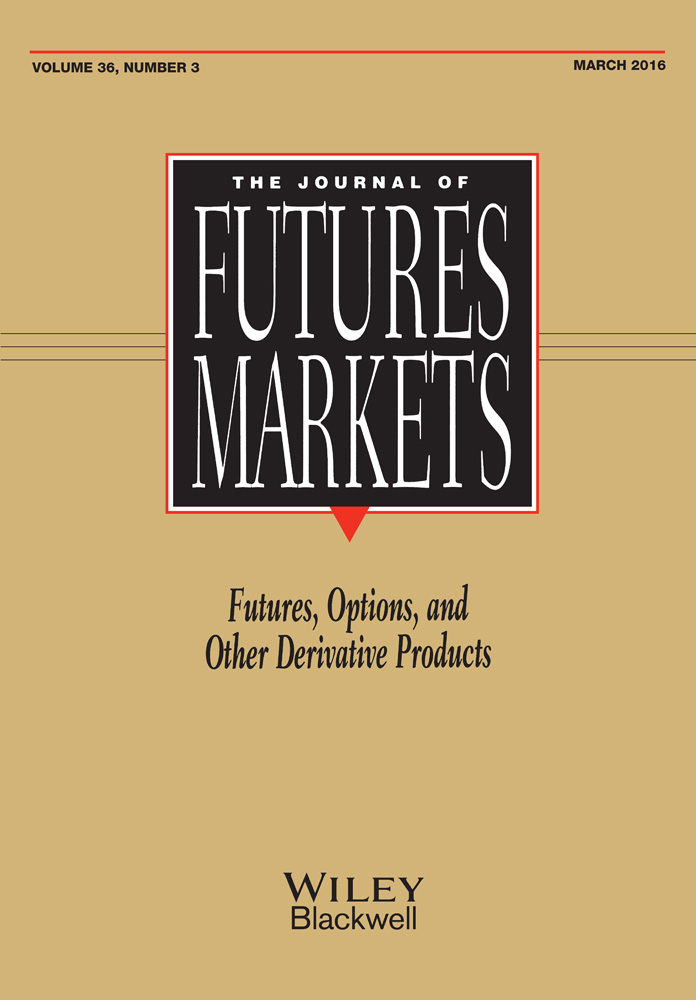
We price S&P 500 index options under the assumption that the conditional risk‐neutral density function of the index follows a Semi‐Nonparametric (SNP) process with GARCH variance. The model is estimated combining a set of option contracts written on the index and the daily index return time series in the period 1996–2011. The in‐sample and out‐sample performance of the model is compared with several benchmark models, beating most of them. We conclude that a pricing model dealing simultaneously with non‐normalities and time‐varying volatility helps to mitigate the observed S&P 500 index option biases.
How did the financial crisis alter the correlations of U.S. yield spreads? (11/2014)
GUIDOLIN MASSIMO, Silvio Contessi e Pierangelo De Pace
Journal of Empirical Finance, 2014, vol. 28, issue C, pages 362-385
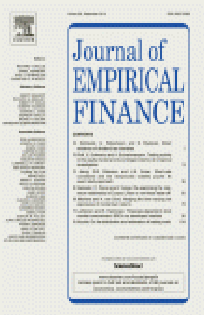
We investigate the pairwise correlations of eleven U.S. fixed income yield spreads over a sample that includes the Great Financial Crisis of 2007–09. Using cross-sectional methods and nonparametric bootstrap breakpoint tests, we characterize the crisis as a period in which pairwise correlations between yield spreads were systematically and significantly altered in the sense that spreads comoved with one another much more than in normal times. We find evidence that, for almost half of the fifty-five pairs under investigation, the crisis has left spreads much more correlated than they were previously. This evidence is particularly strong for liquidity- and default-risk-related spreads, long-term spreads, and the spreads that were most likely directly affected by policy interventions.
Can we forecast the implied volatility surface dynamics of equity options? Predictability and economic value tests (09/2014)
GUIDOLIN MASSIMO and Alejandro Bernales
Journal of Banking & Finance, 2014, vol. 46, issue C, pages 326-342
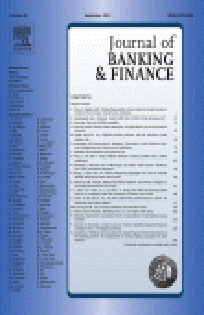
We examine whether the dynamics of the implied volatility surface of individual equity options contains exploitable predictability patterns. Predictability in implied volatilities is expected due to the learning behavior of agents in option markets. In particular, we explore the possibility that the dynamics of the implied volatility surface of individual stocks may be associated with movements in the volatility surface of S&P 500 index options. We present evidence of strong predictable features in the cross-section of equity options and of dynamic linkages between the volatility surfaces of equity and S&P 500 index options. Moreover, time-variation in stock option volatility surfaces is best predicted by incorporating information from the dynamics in the surface of S&P 500 options. We analyze the economic value of such dynamic patterns using strategies that trade straddle and delta-hedged portfolios, and find that before transaction costs such strategies produce abnormal risk-adjusted returns.
Can long-run dynamic optimal strategies outperform fixed-mix portfolios? Evidence from multiple data sets (11/2014)
GUIDOLIN MASSIMO and Daniele Bianchi
European Journal of Operational Research, 2014, vol. 236, issue 1, pages 160-176
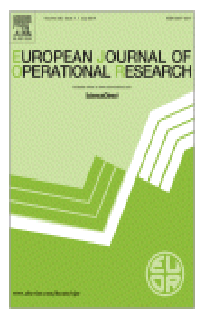
Using five alternative data sets and a range of specifications concerning the underlying linear predictability models, we study whether long-run dynamic optimizing portfolio strategies may actually outperform simpler benchmarks in out-of-sample tests. The dynamic portfolio problems are solved using a combination of dynamic programming and Monte Carlo methods. The benchmarks are represented by two typical fixed mix strategies: the celebrated equally-weighted portfolio and a myopic, Markowitz-style strategy that fails to account for any predictability in asset returns. Within a framework in which the investor maximizes expected HARA (constant relative risk aversion) utility in a frictionless market, our key finding is that there are enormous difference in optimal long-horizon (in-sample) weights between the mean–variance benchmark and the optimal dynamic weights. In out-of-sample comparisons, there is however no clear-cut, systematic, evidence that long-horizon dynamic strategies outperform naively diversified portfolios.
Myths and Facts about the Alleged Over-Pricing of U.S. Real Estate (11/2014)
GUIDOLIN MASSIMO, Francesco Ravazzolo, and Andrea Donato Tortora
The Journal of Real Estate Finance and Economics, 2014, vol. 49, issue 4, pages 477-523
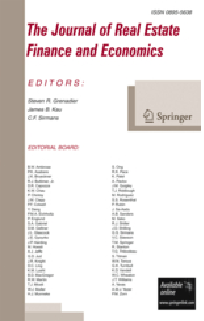
This paper uses a multi-factor pricing model with time-varying risk exposures and premia to examine whether the 2003–2006 period has been characterized, as often claimed by a number of commentators and policymakers, by a substantial mispricing of publicly traded real estate assets (REITs). The estimation approach relies on Bayesian methods to model the latent process followed by risk exposures and idiosynchratic volatility. Our application to monthly, 1979–2009 U.S. data for stock, bond, and REIT returns shows that both market and real consumption growth risks are priced throughout the sample by the cross-section of asset returns. There is weak evidence at best of structural mispricing of REIT valuations during the 2003–2006 sample.
Does the Macroeconomy Predict UK Asset Returns in a Nonlinear Fashion? Comprehensive Out-of-Sample Evidence (08/2014)
MASSIMO GUIDOLIN with Stuart Hyde, David McMillan, and Sadayuki Ono
Oxford Bulletin of Economics and Statistics, 2014, 76, (4), 510-535
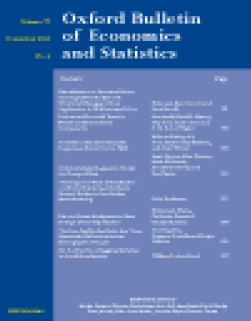
Markov Switching Dynamics in REIT Returns: Univariate and Multivariate Evidence on Forecasting Performance (08/2014)
GUIDOLIN MASSIMO, Brad Case, and Yildiray Yildirim
Real Estate Economics, 2014, vol. 42, issue 2, pages 279-342
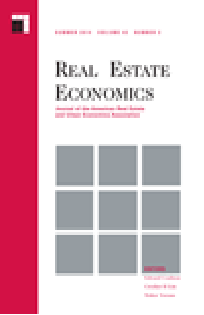
We document the presence of Markov switching regimes in expected returns, variances and the implied reward-to-risk ratio of real estate investment trust (REIT) returns and compare them to properties of stocks and bonds. Our evidence suggests that regime switching techniques are more successful over the period 1972–2008 than other time-series models are. When the analysis is extended to a multivariate setting in which REIT, stock and bond returns are modeled jointly, we find that the data call for the specification of four separate regimes. These result from the absence of synchronicity among the regimes that characterize univariate REIT, stock and bond returns.
Can Linear Predictability Models Time Bull and Bear Real Estate Markets? Out-of-Sample Evidence from REIT Portfolios (07/2014)
GUIDOLIN MASSIMO and Daniele Bianchi
The Journal of Real Estate Finance and Economics, 2014, vol. 49, issue 1, pages 116-164

A recent literature has shown that REIT returns contain strong evidence of bull and bear dynamic regimes that may be best captured using nonlinear econometric models of the Markov switching type. In fact, REIT returns would display regime shifts that are more abrupt and persistent than in the case of other asset classes. In this paper we ask whether and how simple linear predictability models of the vector autoregressive (VAR) type may be extended to capture the bull and bear patterns typical of many asset classes, including REITs. We find that nonlinearities are so deep that it is impossibile for a large family of VAR models to either produce similar portfolio weights or to yield realized, ex-post out-of-sample long-horizon portfolio performances that may compete with those typical of bull and bear models. A typical investor with intermediate risk aversion and a 5-year horizon ought to be ready to pay an annual fee of up to 5.7 % to have access to forecasts of REIT returns that take their bull and bear dynamics into account instead of simpler, linear forecast.
Can VAR Models Capture Regime Shifts in Asset Returns? A Long-Horizon Strategic Asset Allocation Perspective (03/2012)
MASSIMO GUIDOLIN and Stuart Hyde
Journal of Banking and Finance, 36(3), pp. 695–716

Time and Risk Diversification in Real Estate Investments: Assessing the Ex Post Economic Value (10/2009)
GUIDOLIN MASSIMO with Carolina Fugazza and Giovanna Nicodano
Real Estate Economics, 37(3), pp. 341-81.

Welfare gains to long-horizon investors may derive from time diversification that exploits non-zero intertemporal return correlations associated with predictable returns. Real estate may thus become more desirable if its returns are negatively serially correlated. While it could be important for long horizon investors, time diversification has been mostly investigated in asset menus without real estate and focusing on in-sample experiments. This paper evaluates ex post, out-of-sample gains from diversification when E-REITs belong to the investment opportunity set. We find that diversification into REITs increases both the Sharpe ratio and the certainty equivalent of wealth for all investment horizons and for both Classical and Bayesian (who account for parameter uncertainty) investors. The increases in Sharpe ratios are often statistically significant. However, the out-of sample average Sharpe ratio and realized expected utility of long-horizon portfolios are frequently lower than that of a one-period portfolo, which casts doubts on the value of time diversification.
Affiliated Mutual Funds and Analyst Optimism (07/2009)
GUIDOLIN MASSIMO with Simona Mola
Journal of Financial Economics, 93(1), pp. 108-37.

Prior studies have shown that investment banking affiliations place pressure on analysts to produce optimistic recommendations on the investment bank’s stock-clients. Our analysis of a large sample of recommendations issued from 1995 through 2003 indicates that a mutual fund affiliation also affects analysts’ research. That is, analysts are likely to look favorably at stocks held by the affiliated mutual funds. Controlling for a variety of factors including the investment banking affiliation, we find that the greater the portfolio weight of a stock for the affiliated mutual funds, the more optimistic the analyst rating becomes when compared to the consensus. Reputation partly restrains the optimism of analyst recommendations. In fact, the presence of other institutional investors as shareholders of the recommended stocks curbs analyst optimism. Nevertheless, from 1999 through 2001, star analysts report the most optimism when they recommend stocks in the portfolios of affiliated mutual funds.
Forecasts of US Short-term Interest Rates: A Flexible Forecast Combination Approach (06/2009)
GUIDOLIN MASSIMO with Allan Timmermann
Journal of Econometrics, 150(2), pp. 297-311.

This paper develops a flexible approach to combine forecasts of future spot rates with forecasts from time-series models or macroeconomic variables. We find empirical evidence that accounting for both regimes in interest rate dynamics and combining forecasts from different models helps improve the out-of-sample forecasting performance for US short-term rates. Imposing restrictions from the expectations hypothesis on the forecasting model are found to help at long forecasting horizons.
Non-Linear Predictability in Stock and Bond Returns: When and Where Is It Exploitable? (04/2009)
GUIDOLIN MASSIMO with Stuart Hyde, David McMillan, and Sadayuki Ono
International Journal of Forecasting, pp. 373-99.

We systematically examine the comparative predictive performance of a number of alternative linear and non-linear models for stock and bond returns in the G7 countries. Besides Markov switching, threshold autoregressive (TAR), and smooth transition autoregressive (STAR) regime switching (predictive) regression models, we also estimate univariate models in which conditional heteroskedasticity is captured through GARCH, TARCH and EGARCH models and ARCH-in mean effects appear in the conditional mean. Although we fail to find a consistent winner/out-performer across all countries and asset markets, it turns out that capturing non-linear effects is of extreme importance to improve forecasting performance. U.S. and U.K. asset return data are special in the sense that good predictive performance seems to loudly ask for models that capture non linear dynamics, especially of the Markov switching type. Although occasionally also stock and bond return forecasts for other G7 countries appear to benefit from non-linear modeling (especially of TAR and STAR type), data from France, Germany, and Italy express interesting predictive results on the basis of simpler benchmarks. U.S. and U.K. data are also the only two data sets in which we find statistically significant differences between forecasting models. Results appear to be remarkably stable over time, and robust to the specification of the loss function used in statistical evaluations as well as to the methodology employed to perform pairwise comparisons.
International Asset Allocation under Regime Switching, Skew and Kurtosis Preferences (02/2008)
GUIDOLIN MASSIMO with Allan Timmermann
Review of Financial Studies, 21(2), pp. 889-935.

This paper proposes a new tractable approach to solving asset allocation problems in situations with a large number of risky assets which pose problems for standard approaches. Investor preferences are assumed to be defined over moments of the wealth distribution such as its mean, variance, skew and kurtosis. Time-variations in investment opportunities are represented by a flexible regime switching process. In the context of a four-moment international CAPM specification that relates stock returns in five regions to returns on a global market portfolio, we find evidence of distinct bull and bear states. Ignoring regimes, an unhedged US investor’s optimal portfolio is strongly diversified internationally. The presence of regimes in the return distribution leads to a large increase in the investor’s optimal holdings of US stocks as does the introduction of skew and kurtosis preferences. Our paper therefore offers an explanation of the strong home bias observed in US investors’ asset allocation based on regime switching and skew and kurtosis preferences.
Size and Value Anomalies under Regime Shifts (01/2008)
GUIDOLIN MASSIMO with Allan Timmermann
Journal of Financial Econometrics, 6(1), pp. 1-48.
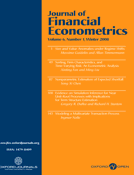
This paper finds strong evidence of time-variations in the joint distribution of returns on a stock market portfolio and portfolios tracking size- and value effects. Mean returns, volatilities and correlations between these equity portfolios are found to be driven by underlying regimes that introduce short-run market timing opportunities for investors. The magnitude of the premia on the size and value portfolios and their hedging properties are found to vary across regimes. Regimes are shown to have a large impact on the optimal asset allocation - especially under rebalancing - and on investors’ utility. Regimes also have a considerable impact on hedging demands, which are positive when the investor starts from more favorable regimes and negative when starting from bad states. Recursive out-of-sample forecasting experiments show that portfolio strategies based on models that account for regimes dominate single-state benchmarks.
Diamonds Are Forever, Wars Are Not. Is Conflict Bad for Private Firms? (12/2007)
GUIDOLIN MASSIMO with Eliana La Ferrara
American Economic Review,97(5), pp. 1978-93.
This paper studies the relationship between civil war and the value of firms in a poor, resource abundant country using microeconomic data for Angola. We focus on diamond mining firms and conduct an event study on the sudden end of the conflict, marked by the death of the rebel movement leader in 2002. We find that the stock market perceived this event as bad news rather than good news for companies holding concessions in Angola, as their abnormal returns declined by 4 percentage points. The event had no effect on a control portfolio of otherwise similar diamond mining companies. This finding is corroborated by other events and by the adoption of alternative methodologies. We interpret our findings in the light of conflict-generated entry barriers, government bargaining power and transparency in the licensing process.
Asset Allocation under Multivariate Regime Switching (11/2007)
GUIDOLIN MASSIMO with Allan Timmermann
Journal of Economic Dynamics and Control, 31(11), pp. 3503-44.

Investing for the Long-Run in European Real Estate (01/2007)
GUIDOLIN MASSIMO with Carolina Fugazza and Giovanna Nicodano
Journal of Real Estate Finance and Economics, 34(1), pp. 35-80.

Properties of Equilibrium Asset Prices Under Alternative Learning Schemes (01/2007)
GUIDOLIN MASSIMO with Allan Timmermann
Journal of Economic Dynamics and Control,31(1), pp. 161-217.

This paper characterizes equilibrium asset prices under adaptive, rational and Bayesian learning schemes in a model where dividends evolve on a binomial lattice. The properties of equilibrium stock and bond prices under learning are shown to differ significantly compared with prices under full information rational expectations. Learning causes the discount factor and risk-neutral probability measure to become path-dependent and introduces serial correlation and volatility clustering in stock returns. We also derive conditions under which the expected value and volatility of stock prices will be higher under learning than under full information. Finally, we derive restrictions on prior beliefs under which Bayesian and rational learning lead to identical prices and show how the results can be generalized to more complex settings where dividends follow either multi-state i.i.d. distributions or multi-state Markov chains.
High Equity Premia and Crash Fears. Rational Foundations (10/2006)
GUIDOLIN MASSIMO
Economic Theory, 28(3), pp. 693-708.

We show that when in Lucas trees model the process for dividends is described by a lattice tree subject to infrequent but observable structural breaks, in equilibrium recursive rational learning may inflate the equity risk premium and reduce the risk-free interest rate for low levels of risk aversion. The key condition for these results to obtain is the presence of sufficient initial pessimism. The relevance of these findings is magnified by the fact that under full information our artificial economy cannot generate asset returns matching the empirical evidence for any positive relative risk aversion.
Predictable Dynamics in the S&P 500 Index Options Implied Volatility Surface (05/2006)
GUIDOLIN MASSIMO with Silvia Goncalves
Journal of Business, 79(3), pp. 1591-1635.
Term Structure of Risk under Alternative Econometric Specifications (03/2006)
GUIDOLIN MASSIMO with Allan Timmermann
Journal of Econometrics,131(1-2), pp. 285-308.

This paper characterizes the term structure of risk measures such as Value at Risk (VaR) and expected shortfall under different econometric approaches including multivariate regime switching, GARCH-in-mean models with student-t errors, two-component GARCH models and a non-parametric bootstrap. We show how to derive the risk measures for each of these models and document large variations in term structures across econometric specifications. An out-of-sample forecasting experiment applied to stock, bond and cash portfolios suggests that the best model is asset- and horizon specific but that the bootstrap and regime switching model are best overall for VaR levels of 5% and 1%, respectively.
An Econometric Model of Nonlinear Dynamics in the Joint Distribution of Stock and Bond Returns (01/2006)
GUIDOLIN MASSIMO with Allan Timmermann
Journal of Applied Econometrics, 21(1), pp. 1-22.
d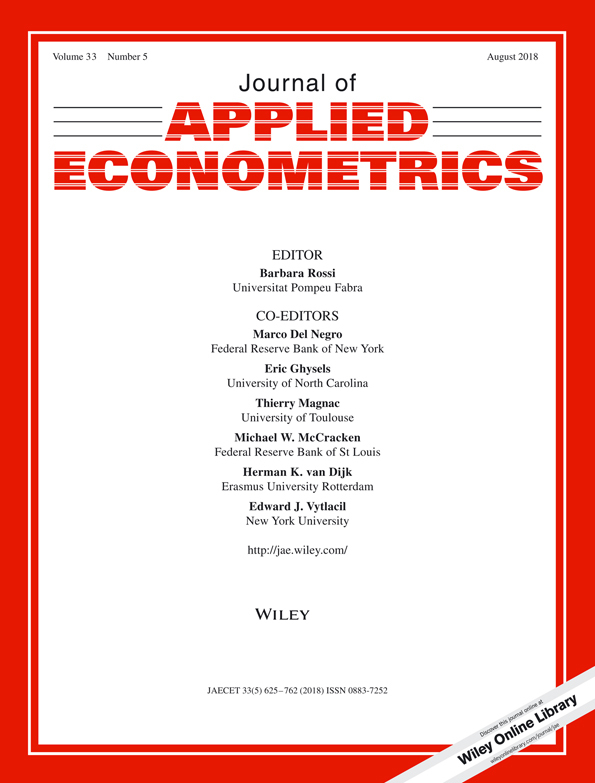
This paper considers a variety of econometric models for the joint distribution of US stock and bond returns in the presence of regime switching dynamics. While simple two‐ or three‐state models capture the univariate dynamics in bond and stock returns, a more complicated four‐state model with regimes characterized as crash, slow growth, bull and recovery states is required to capture their joint distribution. The transition probability matrix of this model has a very particular form. Exits from the crash state are almost always to the recovery state and occur with close to 50% chance, suggesting a bounce‐back effect from the crash to the recovery state.
Economic Implications of Bull and Bear Regimes in UK Stock and Bond Returns (01/2005)
GUIDOLIN MASSIMO with Allan Timmermann
Economic Journal, 115(500), pp. 111-43.

This paper presents evidence of persistent ‘bull’ and ‘bear’ regimes in UK stock and bond returns and considers their economic implications from the perspective of an investor's portfolio allocation. We find that the perceived state probability has a large effect on the optimal asset allocation, particularly at short investment horizons. If ignored, the presence of such regimes gives rise to substantial welfare costs. Parameter estimation uncertainty, while clearly important, does not overturn the conclusion that predictability in the return distribution linked to the presence of bull and bear states has a significant effect on investors’ strategic asset allocation.